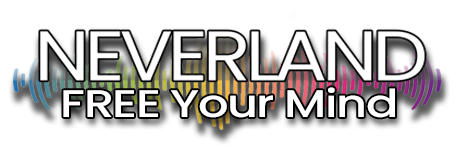Electronic Dance Music (EDM) has evolved from underground raves to a global cultural force, shaping music festivals, pop culture, and even mainstream charts. As of 2025, EDM remains a dynamic genre, but it’s at a crossroads, balancing innovation with nostalgia, accessibility with authenticity. This blog explores the current state of EDM and peers into its future, considering trends, technology, and cultural shifts.
The Current Landscape of EDM
A Diverse Ecosystem
EDM is no longer a monolith. Subgenres like techno, house, drum and bass, dubstep, and trance continue to thrive, each with dedicated communities. Meanwhile, newer styles like future rave, melodic techno, and hyperpop-influenced EDM are gaining traction. Data from platforms like Spotify and Beatport shows that while big room house has waned, genres like tech house and melodic techno dominate streaming playlists and club charts, reflecting a shift toward deeper, more emotive sounds.
Mainstream Influence and Crossovers
EDM’s influence on pop music remains strong. Artists like The Weeknd, Dua Lipa, and Billie Eilish frequently collaborate with electronic producers, blending dance beats with pop sensibilities. Tracks like The Weeknd’s Dawn FM (produced with Swedish House Mafia and Max Martin) exemplify this fusion. However, some purists argue that mainstream crossovers dilute the genre’s raw energy, creating tension between commercial success and underground credibility.
Festivals and Live Experiences
Festivals like Tomorrowland, Ultra, and EDC continue to draw massive crowds, with virtual streams expanding their reach. In 2025, hybrid events—combining in-person and virtual experiences—are standard, driven by post-pandemic innovations. Immersive technologies like VR and AR enhance live sets, with artists like Charlotte de Witte experimenting with 360-degree performances. Yet, rising ticket prices and festival oversaturation raise concerns about accessibility for younger fans.
Technology’s Role
Advancements in music production software, like Ableton Live 12 and AI-driven tools, have democratized EDM creation. Producers can now generate complex sounds with minimal gear, leading to an influx of new talent. However, this ease of production has flooded platforms like SoundCloud with repetitive tracks, making it harder for unique voices to stand out.
Challenges Facing EDM
Oversaturation and Homogeneity
The accessibility of production tools has a downside: many tracks sound formulaic, relying on predictable drops and recycled chord progressions. Fans on platforms like X have voiced frustration over “cookie-cutter” EDM, craving originality. Underground scenes are responding by championing experimental artists who push boundaries, like Bicep or Amelie Lens.
Cultural Shifts
EDM’s roots in counterculture are fading as it becomes more commercialized. The genre’s original ethos—community, rebellion, and inclusivity—is at odds with VIP-centric festivals and brand-driven events. Movements like #RaveThePlanet in Berlin aim to reclaim EDM’s underground spirit, emphasizing free parties and social activism.
Environmental Concerns
Large-scale festivals face scrutiny for their environmental impact. Carbon emissions from travel, energy-intensive stages, and plastic waste are pressing issues. Some organizers, like DGTL Festival, are adopting sustainability practices, such as solar-powered stages and waste reduction, but the industry has a long way to go.
The Future of EDM
AI and Algorithmic Music
AI is poised to reshape EDM. Tools like AIVA and OpenAI’s MuseNet are already generating tracks, and by 2030, AI could co-produce festival anthems tailored to audience preferences in real time. However, this raises questions about authenticity—will AI-generated music lack the human soul that defines EDM’s emotional pull? Producers like Deadmau5 have embraced AI as a creative tool, suggesting a hybrid future where human and machine collaborate.
Immersive and Interactive Experiences
The future of EDM lies in immersion. Expect more VR raves, where fans can “attend” festivals from home, and AR-enhanced performances that blend physical and digital worlds. Haptic technology, allowing fans to “feel” the bass, is in development, promising multi-sensory experiences. These innovations could make EDM more inclusive, reaching audiences in remote areas or with mobility challenges.
Genre Evolution
Subgenres will continue to splinter and fuse. Expect more hybrid styles, like techno-infused pop or jazz-inspired house, as artists experiment with cross-cultural influences. Latin EDM, blending reggaeton and baile funk with electronic beats, is already surging in popularity, driven by artists like Anitta and J Balvin. Meanwhile, the resurgence of 90s rave aesthetics—think gabber and breakbeat—signals a nostalgia-driven wave that could dominate underground scenes.
Community and Decentralization
Blockchain and Web3 technologies are empowering artists to bypass traditional labels. Platforms like Audius allow producers to monetize music directly, fostering a decentralized EDM economy. Fan-driven initiatives, such as NFT-based festival passes or crowdfunded events, could shift power back to communities, reducing reliance on corporate sponsors.
Sustainability and Social Impact
As climate awareness grows, EDM events will prioritize eco-friendly practices. Solar-powered festivals, biodegradable merch, and carbon-neutral tours could become standard by 2030. Additionally, EDM’s platform can amplify social causes—artists like Peggy Gou are already using their influence to address issues like mental health and diversity in the industry.
Conclusion
EDM in 2025 is a vibrant, multifaceted genre, balancing its mainstream dominance with underground innovation. While challenges like oversaturation and commercialization persist, the future is bright, driven by technology, sustainability, and a return to community roots. As AI, VR, and global influences shape the soundscape, EDM will remain a cultural force, uniting dancers and dreamers worldwide. The beat goes on—evolving, pulsing, and pushing boundaries into the next decade.
[Photo Credit: Courtesy of Matt Palmer]

